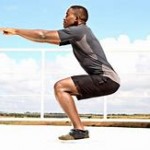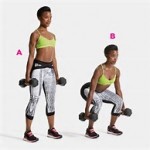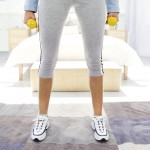Master Your Squat… First
The Squat exercise is a foundation exercise for countless moves. Once you master proper form, adding in weight combo exercises, balance and agility challenges and even flexibility moves, will keep workout boredom away. Master your squat form first though to prevent injuries and increase exercise effectiveness.
Begin standing with your feet hip-width apart. Bending from your knees and hips, lower your body until your hips are just about level with your knees. To allow the sit-back angle, bring both arms forward to counter-balance your weight. Both feet should be flat on the floor. Both knees should be lined up over your ankles. Your hips should be back. Both shoulders should be down and back with your spine lined up (your spine should not be vertical, but should be in proper alignment.) Your chin should be slightly down toward your chest further insuring proper spinal alignment, which includes the cervical spine of your neck.
 Subscribe
Subscribe

